I. Advantages of Pneumatic Caster
Pneumatic caster wheels play a crucial role in various industries and applications, providing smooth mobility and maneuverability for a wide range of equipment. These wheels are commonly used in industries such as logistics, warehousing, manufacturing, and material handling.

While pneumatic caster wheels offer many benefits, their performance and longevity heavily depend on proper maintenance and care. Neglecting these essential tasks can lead to premature wear, decreased efficiency, and even safety hazards. Therefore, it is vital to understand how to maintain and care for pneumatic caster wheels to ensure their optimal functionality and extend their lifespan.
This article aims to provide practical advice on maintenance and care for pneumatic caster wheels. We will discuss the importance of regular inspection, tire inflation, cleaning, and troubleshooting common issues. Additionally, we will address the crucial safety considerations when working with pneumatic caster wheels, such as weight distribution, load limits, and guidelines for operating equipment equipped with these wheels. By following these guidelines, you can enhance the performance, durability, and safety of pneumatic caster wheels in your workplace.
II. Maintenance and Care Tips for Pneumatic Caster Wheels
A. Regular Inspection
1. Importance of inspecting pneumatic caster wheels
Regular inspection is crucial to identify any signs of damage, wear, or potential issues with pneumatic caster wheels. It allows for early detection and timely maintenance, preventing further damage and ensuring the safe operation of equipment. Neglecting inspections can lead to unexpected failures and accidents.
2. Recommended inspection intervals
The frequency of inspections may vary depending on the usage and working conditions. However, a general guideline is to inspect pneumatic caster wheels at least once a month or before any significant use. Additionally, consider more frequent inspections in demanding environments or if the equipment undergoes heavy loads or constant movement.
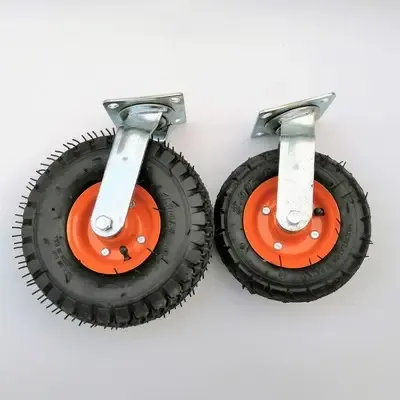
3. Key components to inspect
During the inspection, pay attention to the following components:
a. Wheel condition: Check for any signs of wear, cracks, or bulges on the tire surface. Ensure the tread depth is within acceptable limits.
b. Axle: Examine the axle for bends or misalignment that may affect the wheel’s rotation.
c. Bearings: Inspect the bearings for smooth operation and check for any signs of dirt, debris, or inadequate lubrication.
d. Mounting hardware: Check the tightness of bolts, nuts, and other mounting hardware to ensure proper fastening.
e. Valve stem: Inspect the valve stem for damage or leaks. Replace it if necessary.
f. Brake mechanisms (if applicable): Verify that the brakes are functioning correctly and engage smoothly when required.
Regular inspections provide an opportunity to address any issues promptly and perform necessary maintenance tasks, ensuring the continued performance and longevity of pneumatic caster wheels.
B. Tire Inflation
Proper tire inflation is a critical aspect of maintaining pneumatic caster wheels. Here are some key points to consider:
1. Importance of maintaining proper tire inflation: Maintaining the correct tire inflation is essential for several reasons. Firstly, it ensures optimal load-bearing capacity and stability of the caster wheels. Underinflated tires can lead to excessive sidewall flexing, reducing the wheel’s load capacity and potentially causing premature failure. Overinflated tires, on the other hand, may result in a harsh ride and increased susceptibility to damage from impacts or rough surfaces. Proper tire inflation also contributes to smoother operation, better shock absorption, and improved maneuverability.
2. Guidelines for checking tire pressure: Regularly checking the tire pressure is crucial to ensure it falls within the appropriate range. Follow these guidelines for accurate tire pressure measurement:
a. Use a reliable pressure gauge: Invest in a quality pressure gauge that provides accurate readings.
b. Check tire pressure when the wheels are cool: Tire pressure can increase when the wheels heat up during use. To obtain accurate readings, measure the pressure when the wheels are at ambient temperature.
c. Remove the valve cap and press the gauge firmly: Unscrew the valve cap and firmly press the pressure gauge onto the valve stem to get an accurate reading.
d. Repeat for each wheel: Check the pressure of each pneumatic caster wheel individually, as they may have different load requirements.
3. Recommended tire pressure range: The recommended tire pressure range varies depending on factors such as the wheel’s load capacity, tire size, and application. In general, the recommended pressure range for pneumatic caster wheels typically falls between 20 to 40 psi (pounds per square inch). However, always refer to the specific manufacturer’s recommendations for your caster wheels to ensure optimal performance and safety.
By regularly checking the tire pressure and maintaining it within the recommended range, you can ensure that your pneumatic caster wheels perform optimally, provide adequate load-bearing capacity, and contribute to a smooth and safe operation.
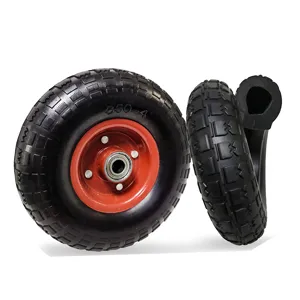
C. Cleaning
Proper cleaning of pneumatic caster wheels is vital for maintaining their performance and longevity. Here are some important considerations:
1. Importance of keeping pneumatic caster wheels clean: Regular cleaning is essential for several reasons. Firstly, it helps remove dirt, dust, and debris that can accumulate on the wheels during use. This buildup can affect the wheel’s rotation, cause imbalance, and hinder smooth movement. Secondly, cleaning allows you to inspect the wheels for any signs of damage, wear, or foreign objects that may have become lodged in the treads. Detecting these issues early can prevent further damage and ensure safe operation.
2. Suitable cleaning methods and materials: When cleaning pneumatic caster wheels, follow these methods and use appropriate materials:
a. Mild detergent or soapy water: Use a mild detergent or create a soapy water solution to clean the wheels. Avoid using harsh chemicals or solvents that could damage the rubber or other components.
b. Soft brush or cloth: Use a soft-bristled brush or a cloth to gently scrub the wheels and remove dirt and grime. Avoid using abrasive materials that could scratch or damage the wheel’s surface.
c. Rinse with clean water: After cleaning, rinse the wheels thoroughly with clean water to remove any residue from the detergent or cleaning solution.
d. Dry completely: Allow the wheels to dry completely before using them again. Moisture trapped between the tire and the rim can lead to corrosion or affect tire performance.
3. Removing debris and preventing buildup: In addition to regular cleaning, take the following steps to remove debris and prevent buildup:
a. Inspect and remove lodged objects: Periodically inspect the wheels for any foreign objects, such as nails, stones, or debris, that may have become stuck in the treads or the wheel itself. Remove these objects carefully to prevent further damage.
b. Brush or blow out debris: Use a brush or compressed air to remove any loose debris or particles that have accumulated in the wheel’s treads or other components.
c. Implement preventive measures: Consider using wheel covers or guards in environments where excessive debris or dirt is a concern. These measures can help minimize the buildup and reduce the frequency of cleaning required.
D. Troubleshooting Common Issues
Pneumatic caster wheels can encounter various common issues over time. Here’s a guide to help you identify, address, and fix these problems:
1. Identifying common issues: Be aware of the following common issues that can arise with pneumatic caster wheels:
a. Punctures: Look for signs of punctures, such as visible holes or nails embedded in the tire. Punctures can cause air leaks and result in reduced tire pressure.
b. Leaks: Check for leaks by listening for hissing sounds or applying soapy water to the tire surface and observing for bubbles. Leaks can lead to inadequate inflation and compromised wheel performance.
c. Wear and tear: Inspect the tire tread and sidewalls for signs of excessive wear, cracking, or bulging. These can indicate the need for tire replacement or professional inspection.

2. Steps to address and fix common problems:
a. Punctures: If you identify a puncture, you can address it by following these steps:
i. Remove any objects stuck in the tire carefully.
ii. If the puncture is small, you may be able to repair it with a tire repair kit specifically designed for pneumatic wheels. Follow the instructions provided with the kit.
iii. For larger or irreparable punctures, consider replacing the tire with a suitable replacement. Consult the manufacturer or a professional for assistance in finding the right tire.
b. Leaks: When dealing with leaks, follow these steps:
i. Locate the source of the leak by listening or using the soapy water method mentioned earlier.
ii. If the leak is coming from the valve stem, ensure it is properly tightened. If necessary, replace the valve stem.
iii. For leaks in the tire itself, consider using a tire sealant specifically designed for pneumatic wheels. Follow the product instructions for application.
iv. If the leak persists or is beyond repair, it may be necessary to replace the tire.
c. Wear and tear: If you notice significant wear and tear on the tire, take the following steps:
i. Measure the tire tread depth using a tread depth gauge. If the tread depth falls below the manufacturer’s recommended limit, it’s time to replace the tire.
ii. Check for any signs of damage to the tire sidewalls, such as cracking or bulging. If these issues are present, it is advisable to replace the tire to prevent further complications.
III. Safety Considerations When Using Pneumatic Caster Wheels
A. Weight Distribution
Proper weight distribution is crucial for the safe and efficient operation of equipment equipped with pneumatic caster wheels. Consider the following points:
1. Understanding the impact of weight distribution on pneumatic caster wheels: Uneven weight distribution can significantly affect the performance and stability of pneumatic caster wheels. When weight is not evenly distributed, it can cause excessive stress on certain wheels, leading to imbalances, reduced maneuverability, and potential safety hazards.
2. Guidelines for distributing weight evenly:
a. Know the load capacity: Determine the load capacity of the caster wheels and ensure that the total weight being supported does not exceed this limit. Exceeding the load capacity can cause premature wear and compromise the wheels’ ability to function properly.
b. Balance the load: Distribute the weight as evenly as possible across all the wheels. This helps maintain stability and prevents any single wheel from bearing an excessive load. Consider using load-bearing platforms or pallets to distribute weight evenly.
c. Position heavy items closer to the equipment’s center of gravity: Placing heavy objects closer to the center of the equipment helps maintain balance and stability during movement.
d. Secure the load: Ensure that the load is properly secured to prevent shifting or falling during transport, which can cause uneven weight distribution.
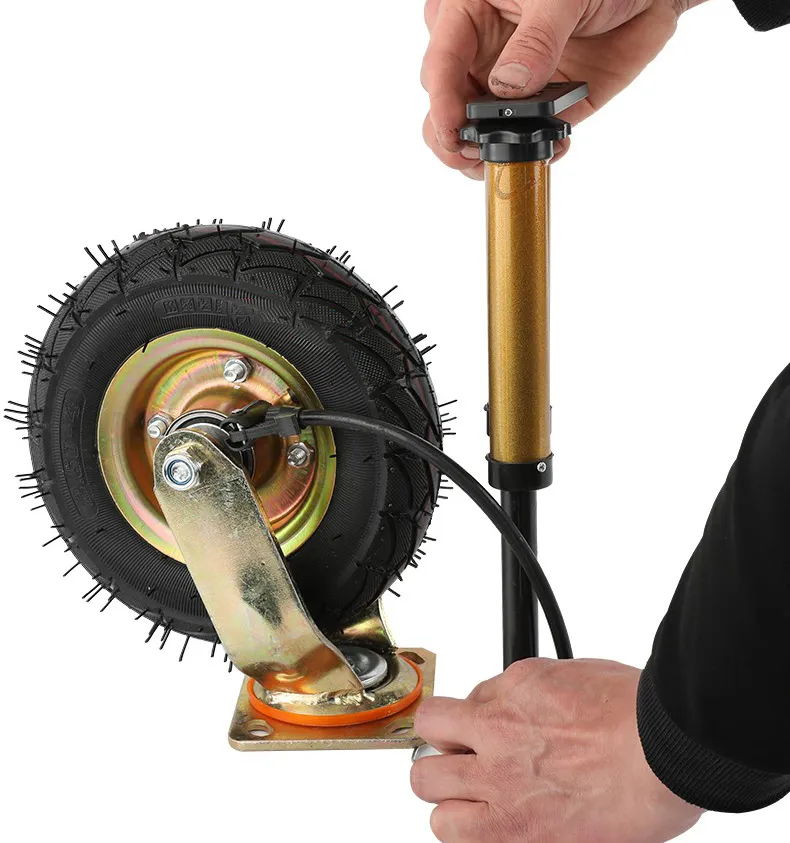
3. Effects of uneven weight distribution on performance and safety:
a. Reduced maneuverability: Uneven weight distribution can lead to difficulty in maneuvering equipment, making it harder to navigate corners or narrow spaces.
b. Increased stress on wheels: When a wheel bears a disproportionate amount of weight, it can experience excessive stress, leading to accelerated wear, potential damage, and increased risk of failure.
c. Imbalanced movement: Uneven weight distribution can cause the equipment to tilt or lean to one side, affecting stability and potentially causing accidents or tip-overs.
d. Uneven tire wear: Uneven weight distribution can result in uneven tire wear, reducing the lifespan of the wheels and requiring premature replacement.
B. Load Limits
Adhering to the specified load limits for pneumatic caster wheels is crucial for ensuring safety and preventing damage. Consider the following points:
1. Importance of adhering to load limits specified by manufacturers: Manufacturers provide load limits for pneumatic caster wheels based on extensive testing and engineering considerations. Adhering to these load limits is essential to maintain the structural integrity of the wheels, ensure optimal performance, and prevent accidents or equipment failures.
2. How to determine load limits for pneumatic caster wheels:
a. Consult the manufacturer’s guidelines: The manufacturer typically provides load limit information for their pneumatic caster wheels. Refer to the product documentation or contact the manufacturer directly to obtain the load limit specifications.
b. Consider the wheel’s load capacity: Each pneumatic caster wheel has a specific load capacity, which indicates the maximum weight it can support. Calculate the total weight being applied to all the wheels and ensure it does not exceed the combined load capacity of the wheels.
c. Consider the dynamic load: In certain applications, the weight on the wheels may fluctuate due to sudden movements, impacts, or vibrations. Take into account the dynamic load, which is the maximum weight the wheels can handle during such situations, to ensure safe operation.
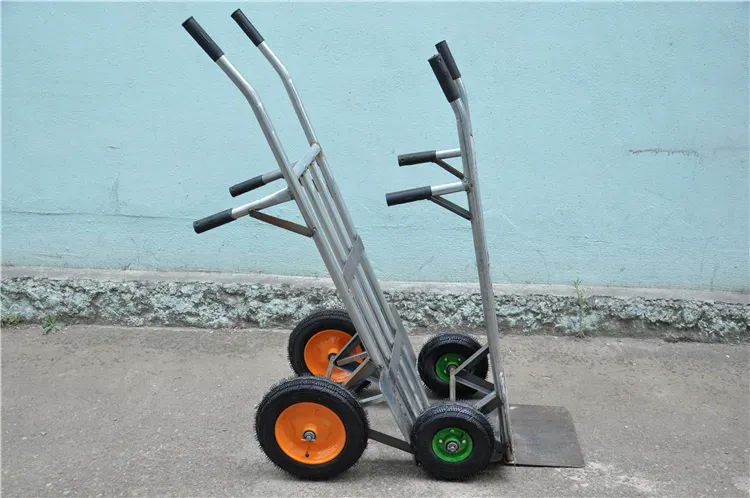
3. Consequences of exceeding load limits:
a. Wheel failure: Exceeding the load limits can cause excessive stress on the wheels, leading to premature wear, damage, or even failure. This can result in sudden breakdowns or loss of control.
b. Reduced maneuverability: Overloading the wheels can affect the equipment’s maneuverability, making it harder to steer or navigate, and increasing the risk of accidents or collisions.
c. Safety hazards: Exceeding load limits can compromise the stability and balance of the equipment, potentially causing tip-overs, loss of control, or other hazardous situations that may harm operators or bystanders.
d. Increased maintenance and replacement costs: Overloading the wheels can accelerate wear and tear, requiring more frequent maintenance and premature replacement of the wheels, resulting in additional expenses.
C. Guidelines for Operating Equipment with Pneumatic Caster Wheels
Operating equipment with pneumatic caster wheels requires adherence to proper safety practices and procedures. Consider the following guidelines:
1. Proper training and familiarization with equipment:
a. Receive training: Operators should undergo proper training on the specific equipment they will be using. Training should cover the safe operation, handling, and maintenance of the equipment.
b. Read the manual: Familiarize yourself with the equipment’s user manual provided by the manufacturer. The manual contains important information regarding safe operation, maintenance procedures, and any specific considerations related to pneumatic caster wheels.
2. Safe operation practices and procedures:
a. Observe weight limits: Ensure that the equipment is not overloaded and remains within the recommended weight limits specified by the manufacturer.
b. Slow and controlled movements: Avoid abrupt acceleration, deceleration, or sharp turns, as these can affect the stability and balance of the equipment. Operate the equipment with smooth and controlled movements.
c. Mind obstacles and terrain: Be aware of potential obstacles, uneven surfaces, or changes in terrain that may affect the equipment’s stability. Adjust the speed and operation accordingly to maintain safety.
d. Follow operational instructions: Adhere to the recommended operational procedures provided by the manufacturer. This may include guidelines for starting, stopping, steering, and other equipment-specific functions.
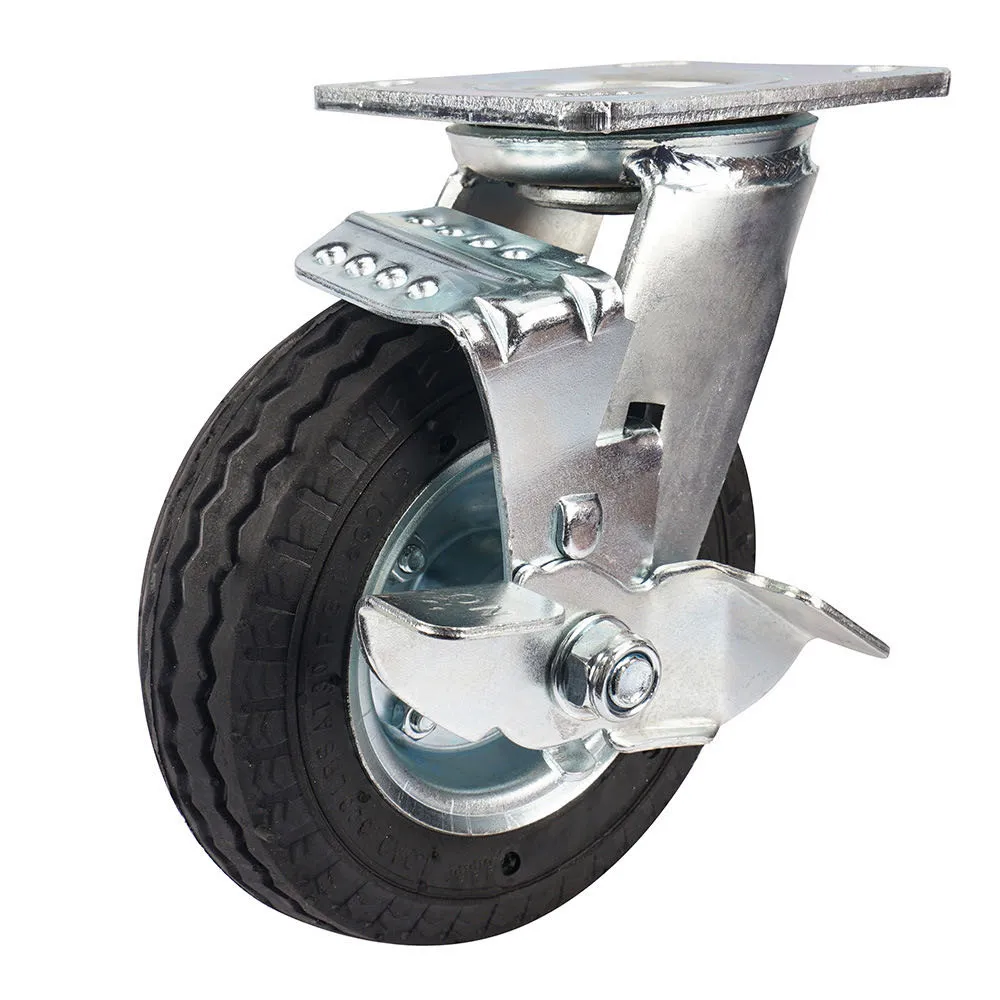
3. Recommended safety gear and precautions to take:
a. Personal protective equipment (PPE): Wear appropriate PPE, such as safety shoes, gloves, and eye protection, as recommended for the specific equipment and work environment.
b. Use safety features: Familiarize yourself with the safety features of the equipment and ensure they are in proper working condition. This may include features like brakes, safety locks, or emergency shut-off switches.
c. Maintain clear visibility: Ensure that your line of sight is clear and unobstructed while operating the equipment. Adjust mirrors, if available, for better visibility, and use caution when moving in reverse.
d. Communicate and signal: If working in a team or in shared spaces, communicate with others and use appropriate signals to ensure coordination and avoid accidents.
IV. Conclusion
Throughout this article, we have explored essential maintenance and care tips for pneumatic caster wheels as well as highlighted safety considerations when using this type of equipment. We discussed the importance of regular inspection, tire inflation, cleaning, and troubleshooting common issues. Additionally, we emphasized the significance of proper weight distribution, adhering to load limits, and following guidelines for safe operation.
By following these guidelines, you can make a significant impact on the lifespan, performance, and safety of pneumatic caster wheels. Incorporate these practices into your regular maintenance routines, train operators on safe operation procedures, and prioritize the well-being of both your equipment and personnel. With proper care and attention, pneumatic caster wheels will continue to serve you effectively and reliably.
Bullcaster is a top supplier of casters wheels in China, we have 200+ SKUs of pneumatic casters, you can check our product page, or contact us to get a quote and support.


